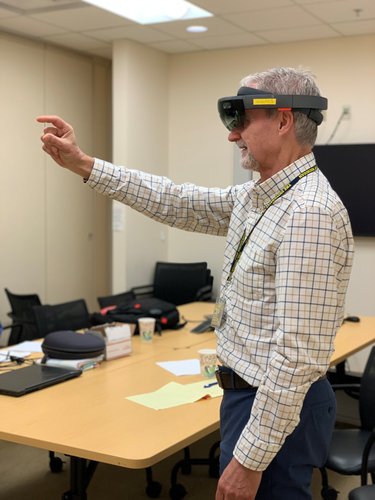-
Home
-
About JCTR
-
Gold Open Access
-
Issues
-
Editorial board
-
Author guidelines
-
Publication fees
-
Online first
-
Special issues
-
News
-
Publication ethics
-
Partners
-
Submit your manuscript
-
Submit your review report
-
Editorial Office
-

This work is licensed under a Creative Commons Attribution-NonCommercial 4.0 International License. ISSN print: 2382-6533 ISSN online: 2424-810X
Volume 7 Issue 1
Virtual reality simulation for critical pediatric airway management training
Elizabeth M. Putnam*, Lauryn R. Rochlen, Erik Alderink, James Augé, Vitaliy Popov, Robert Levine, Alan R. Tait
Putnam et al. J Clin Transl Res 2021; 7(1):8
Published online: February 2, 2021
Abstract
Background: Pediatric airway emergencies are relatively rare, but have potentially devastating consequences. Simulation based education is important in providing zero-risk management experience for these critical events.
Aims: 1. To assess usability and feasibility of combined interactive instructional videos and a novel Virtual Reality (VR) trainer for healthcare professionals. 2. To evaluate the impact of this combination on learners’ knowledge of critical airway events in children.
Methods: The study population included medical students, residents, faculty, and advanced practice nurses. Participants completed a short baseline knowledge pre-test of pediatric airway emergency management, followed by these consecutive interventions: 1. Interactive instructional pediatric airway videos. 2. VR trainer (HoloLens technology), simulating a pediatric critical airway event. Participants were randomized to manage anaphylaxis or foreign body aspiration. Finally, participants completed a second knowledge test (post-test) and a survey of their perceptions of the videos and VR trainer.
Results: 41 participants were included. Overall, both interventions were well received. Positive perceptions included realism, interactivity, and active learning environment. Negative comments focused on video speed and the VR trainer learning curve. Participants reported preferences for future training of pediatric airway events to include videos and VR trainers, with or without didactic lectures. Most areas of knowledge showed slight to significant improvements following the interventions. Specifically, questions on pediatric anatomy, anaphylaxis, Heimlich maneuver, and foreign body removal showed the highest improvement in scores (P<0.05).
Conclusions: Interactive videos, in combination with a virtual reality experience, provide promising zero-risk training for pediatric critical airway events.
Relevance for Patients: Pediatric airway emergencies are relatively rare, but the potential consequences are devastating. Virtual reality is established as a valued mode of education with regard to medical emergency training. Multimedia informational and instructional formats result in greater understanding of information. Results from our intervention, combining an interactive video tutorial and a virtual reality experience, show this was well received by a cross section of healthcare providers. We demonstrated improved test scores in a pediatric airways quiz.

DOI: http://dx.doi.org/10.18053/jctres.07.202101.008
Author affiliation
1. Department of Anesthesiology, University of Michigan Health Systems, Ann Arbor, MI, USA
2. Michigan Institute for Clinical & Health Research, University of Michigan Health Systems, Ann Arbor, MI, USA
3. Department of Learning Health Sciences, University of Michigan Health Systems, Ann Arbor, MI, USA
4. Emergency Care Center, Jackson Memorial Hospital, Miami, FL and ArchieMD, Inc., Boca Raton, FL. USA
*Corresponding author
Elizabeth M Putnam
Department of Anesthesiology and Department of Learning Health Sciences, University of Michigan Health Systems, 1500 E. Medical Center Drive, Ann Arbor, MI 48109, USA
Tel: (734) 763-8128
E-mail: eread@med.umich.edu
Handling editor:
Michal Heger
Department of Pharmaceutics, Utrecht University, the Netherlands
Department of Pharmaceutics, Jiaxing University Medical College, Zhejiang, China

